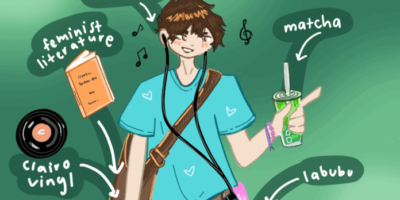Anita Sarkeesian is not your typical critic. This Ontario born media critic is famous for her YouTube channel, Feminist Frequency, which she started with funds from her campaign on Kickstarter in May of 2012 to create a series of videos on sexism in video games. After the release of Tropes vs. Women, she became the target of online harassment. She is often named the most hated person on the internet, and for every person supporting her, there is someone who is fighting against her. Sarkeesian’s goal is quite simple: raising awareness about sexism in the media and speaking out against it in hopes of informing others and creating a safe community to talk about these issues. Most of her work is in critiquing common characterization of women in the media and pointing out the far reaching negative impacts of those which are sexist and often misogynist. She has created videos on a range of topics including the manic pixie dream girl, the bechdel test, and her most popular work, Tropes vs. Women.
Tropes vs. Women in Video Games is a three part series which delves into the issues of the fashion in which women are portrayed in video games. The first is the damsel in distress, a character who is generally used to push the story along and to give motivation to the male protagonist, often a brother, partner or son. She is designed to cause an emotional trigger and is aimed at young, straight, male players, who are the main target audience of all video game production. Characters like Crystal in Star Fox Adventures, Pauline in the original Donkey Kong, and Princess Peach in Super Mario Bros. are all examples of the damsel in distress. You can also find a damsel in distress in almost every single Final Fantasy game. These characters are almost all kidnapped and need to be saved by the male protagonist and are framed as weak and fragile and most often, the adventures are too dangerous for them to go on. These characters reinforce the idea that subordinate and powerless women are actually more attractive and that this role in a relationship is considered normal or necessary. Their audience is young boys who are often unaware of this trope at all and are unquestioning of the damsel in distress being portrayed.
Her videos also concentrate on the violence against women used in video games. The shock value of the brutal murder of women is constantly used to trigger an emotion in the male player and to carry on the story of the male character. Sarkeesian points out instances in which misogyny is used in main stream video games and how it is consistently and often blatantly used. Female disempowerment is constantly demonstrated by violence against women. The idea that domestic violence is somehow brought on by the woman who deserved it, wanted it, or literally asked for it is perpetuated by the characters in video games who must kill a women they might love or care about in order to save them from their misery. The most startling part of these characters is that when they fail to save the woman, the goal of the game is then to prove their masculinity by performing violence and exerting dominance on others, reinforcing the backwards idea that a good man must be violent and resist showing any emotion other than anger. This idea is replicated in our society and a common belief in both men and women.
Sarkeesian highlights that she doesn’t think that these games or other forms of media should be banned or censured, but instead that these tropes and gender clichés should be noted and critically analyzed. Sexism is reinforced in the media if the audience is unaware of its existence. She also points out the nostalgic forms of media which have ironic self-awareness of sexism, like that used in video game Super Meat Boy or television shows like Mad Men, does not challenge or disrupt the message to its audience nor does it subvert the audience’s expectations. They leave the damsel in distress powerless and incapable of self-sufficiency just as she is in self-unaware media. There is an assumption that if an audience understands that sexism is purposefully being used, then it is acceptable. These satires which acknowledge sexism do not make it okay regardless of how over the top or obvious the sexism may be. Sarkeesian also notes that this type of ironic media is generally used to defend sexism when ultimately using it is as a selling tool.
Before you jump up and criticize Sarkeesian, you should know that it has already been done on all possible outlets. In these critiques, she is most commonly attacked on a personal level – from the way she looks to the way she talks, often without notice of her argument at all. These critics are on occasion pointing out important and valid arguments, though they relay anger towards her and feminists as if people are being attacked by what she is pointing out about the media. She is the victim of online harassment including endless hate mail and repeated vandalism of her Wikipedia page with images of sex acts, personal rape, and death threats. She reported to The New York Times that she was emailed images of herself being raped by video game characters and there was an online video game created where users could punch Anita until the screen turned red. Thankfully, the press has not at all been negative; there has been much attention given to Sarkeesian in the past year as a result of harassment and she is now in the spotlight. She has the attention of the Internet, and as awareness increases so does support for her cause.




Leave a Reply